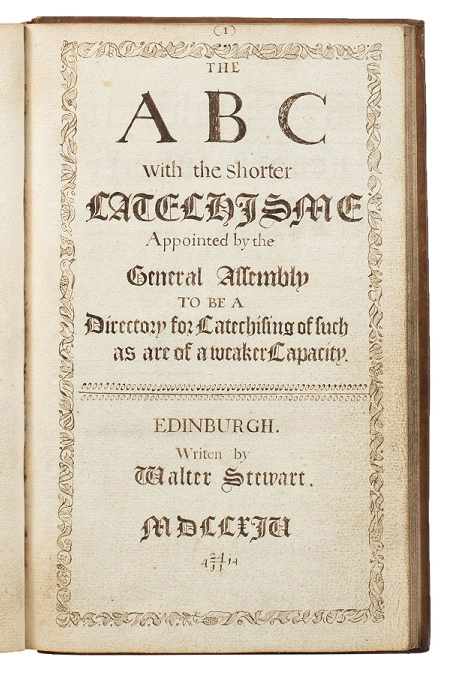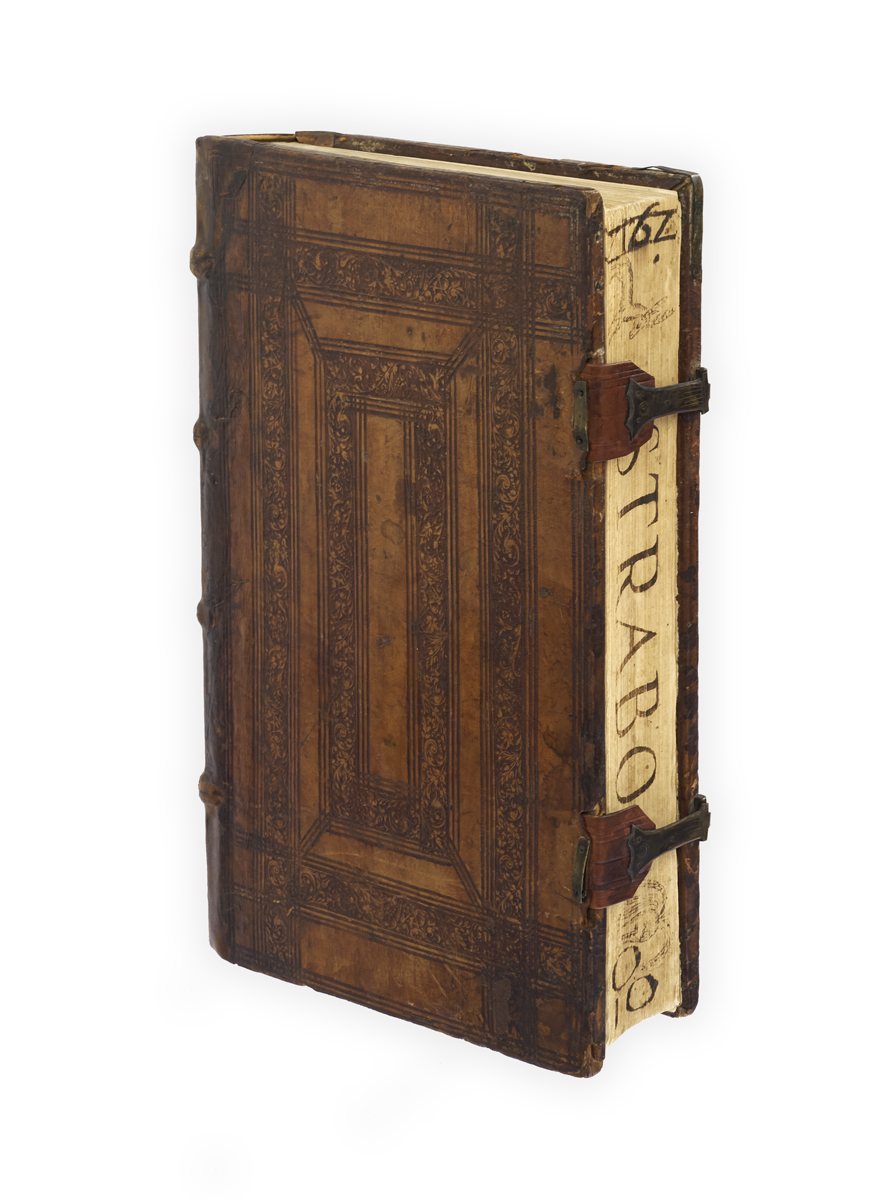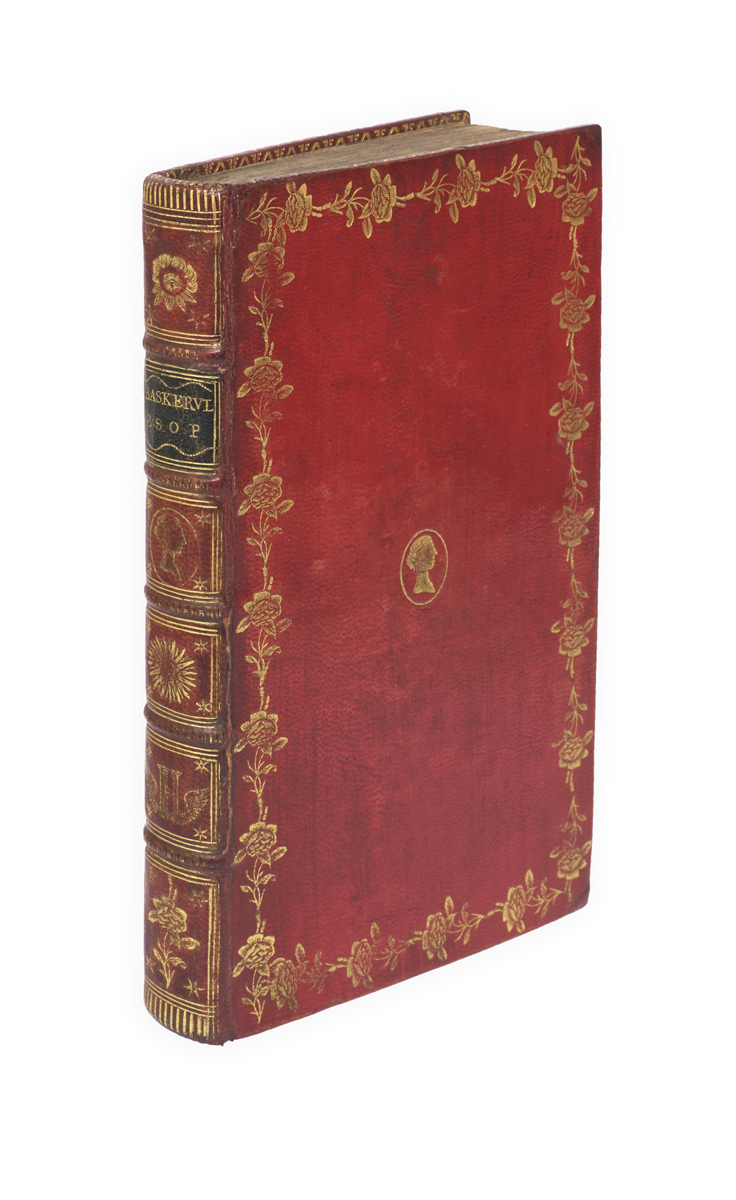
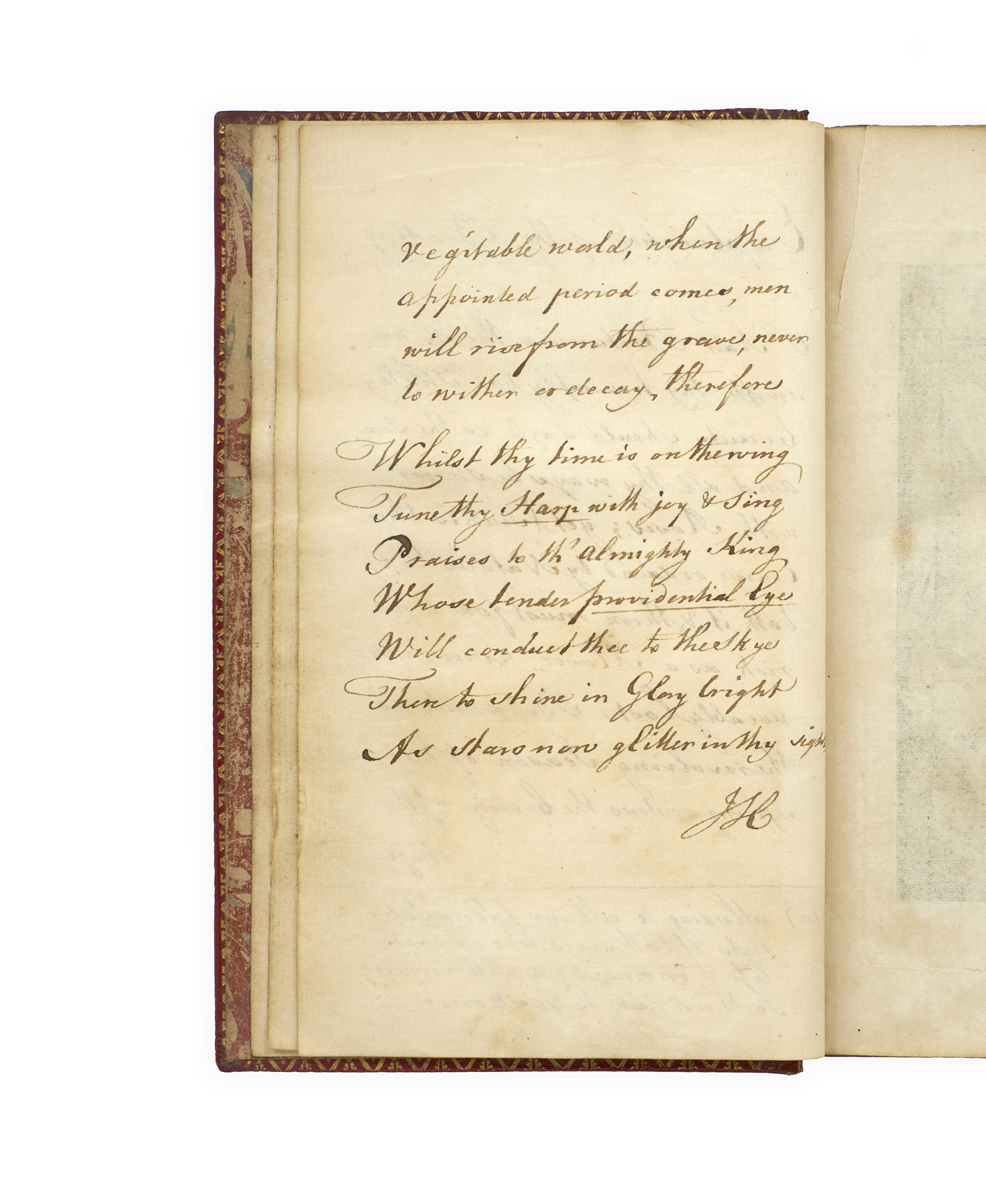
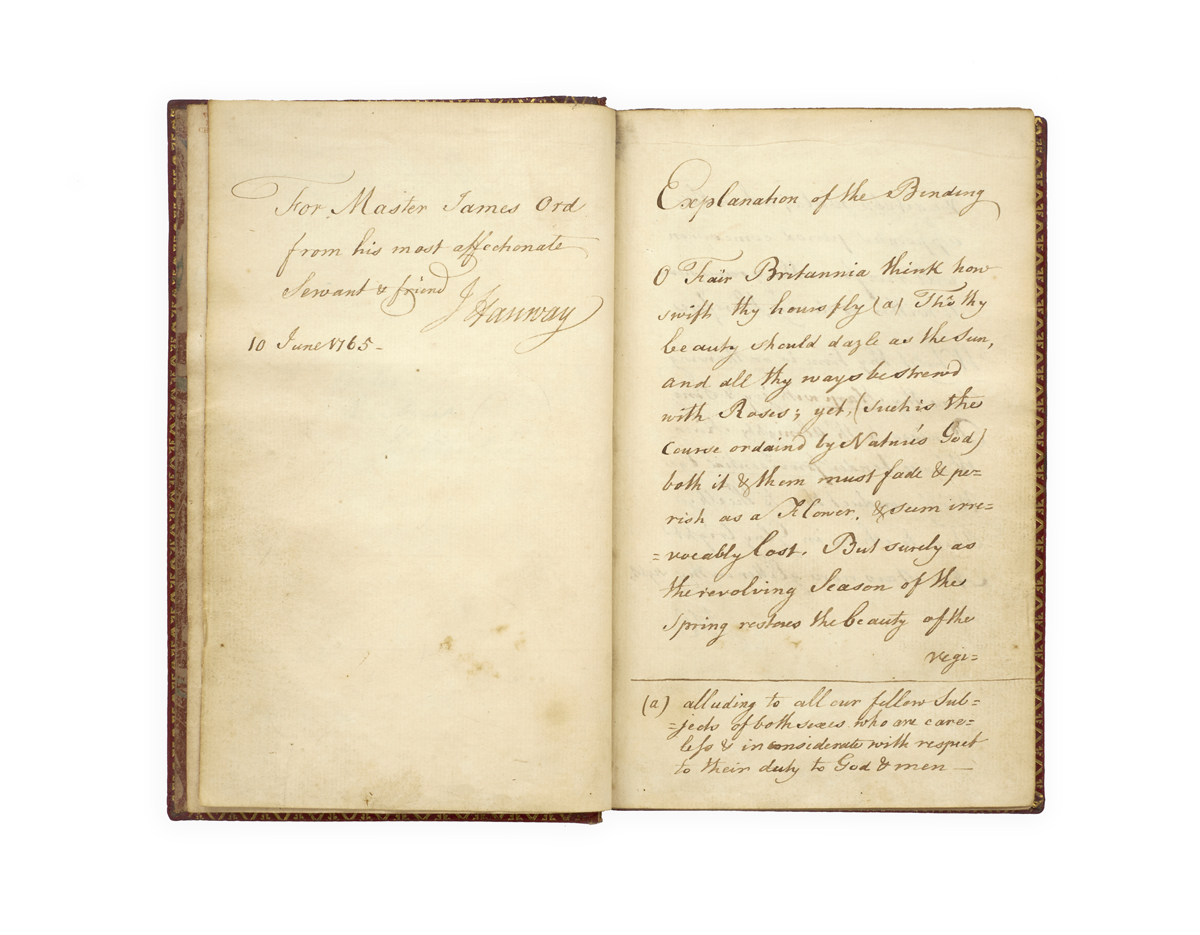

HANWAY BINDING, WITH AN AUTOGRAPH MANUSCRIPT ‘EXPLANATION’
AESOP.
[DODSLEY, Robert.] Select Fables of Esop and other Fabulists. In three Books …
Birmingham, Printed by John Baskerville, for R. and J. Dodsley … 1764.
8vo, pp. [2], lxxvii, [1], 186, [26], with an engraved frontispiece, an engraved vignette on the title-page and head- and tail-pieces by Grignon after Wale; rather foxed throughout as nearly always; in a fine contemporary binding for Jonas Hanway of red morocco, covers gilt with a border of roses, the head of Britannia in profile on the front cover, a lyre on the rear, spine gilt in compartments, each with a different emblematic tool (ever-open eye, Britannia head, sunburst, winged hourglass, rose), front joint and upper edge of rear board neatly restored; on the front endpapers is a presentation inscription by Hanway and a two-page manuscript ‘Explanation of the Binding’; quarter morocco box.

Added to your basket:
[DODSLEY, Robert.] Select Fables of Esop and other Fabulists. In three Books …
An extremely attractive emblematic binding by Hanway’s second binder, inscribed by Hanway ‘For Master James Ord from his most affectionate Servant & friend / J Hanway / 10 June 1765’, and with a two-page ‘Explanation of the Binding’ in prose and verse:
O Fair Brittania think how swift thy hours fly (a) Tho’ thy beauty should dazzle as the Sun and all thy ways be strewd with Roses … [etc.]
Whilst thy time is on the wing
Tune thy Harp with joy & sing … [etc.]
(a) Alluding to all our fellow Subjects of both sexes who are careless & inconsiderate with respect to their duty to God & men.
The young recipient was James Ord (1759–1843), second son of the mine owner and MP William Ord, of Fenham (c. 1715–1768), and Anne Dillingham (d. 1806). William Ord was a subscriber to Hanway’s Marine Society in 1756 and the Magdalene Society in 1758, but ‘in later life he was afflicted with an obsession for hanging himself’ (History of Parliament), succeeding on the third attempt in 1768. After his death the wealthy ‘Mrs. Ord’ became an important blue-stocking, regularly hosting Elizabeth Montagu, Hannah More, and others at her London house, and was a friend to Charles Burney and Fanny d’Arblay (who also met Hanway at her house in 1783). Hanway seems to have taken James Ord under his wing, perhaps because of his father’s mental health, and in March 1765, on the latter’s first visit to London, had presented him with a nonce volume of his own works of advice, with a long inscription, in a binding by his first binder (see below). James Ord, who was the only one of nine children to survive his mother, later became a clergyman.
Though less known than those executed for Thomas Hollis, the emblematic bindings produced for the eccentric philanthropist Jonas Hanway from the late 1750s are ‘of better material, and the tools which decorate them are more amusing than those of his contemporary; perhaps they have been neglected because they are comparatively rare’ (G.D. Hobson, English Bindings in the Library of J.R. Abbey, 1940). Hanway employed two binders, and the present example is perhaps the earliest (certainly the earliest dated) to be executed by the second binder.
Hobson compiled a census of 26 ‘Hanway’ bindings, of which 23 were presentation copies of his own works. Item VIII in his census is the work mentioned above inscribed to James Ord in March 1765, in a calf binding by his first binder (British Library C.69.e.2). As Hobson suggests, Hanway changed binders in 1765, ‘no doubt soon after No. VIII had been given to James Ord’, and indeed the present volume narrows the timescale to between March and June that year. Hanway’s second binder favoured red morocco and employed a fine array of emblematic tools, almost all of which feature on the present example. Similar bindings to the present one can be seen on a compilation volume presented to a ’Young Lady’ in 1765 (Hobson X, see M. Foot, The Henry Davis Gift II, 176), and on another copy of Aesop’s Select Fables (1764) without any inscriptions (Maggs catalogue 1075, Part II, item 181). Only two of the 26 bindings surveyed by Hobson (X and XI, copies of Hanway’s Miscellanies) contain an ‘Explanation of the Binding’ like that found here.
Provenance: Jonas Hanway, to James Ord; Dr Porter, Cheltenham (nineteenth-century inscription); Williams’s Library Cheltenham (small red stamp to endpapers, f. 1815, books sold 1896); bookplate of Henry John Beresford Clements (1869–1940, collector of armorial bindings, lot 548 in the sale of 1966, bought by H.D. Lyon); modern bookplate, with monogram ‘M.E.W.’.
Gaskell 27 (most copies ‘now badly foxed’).
